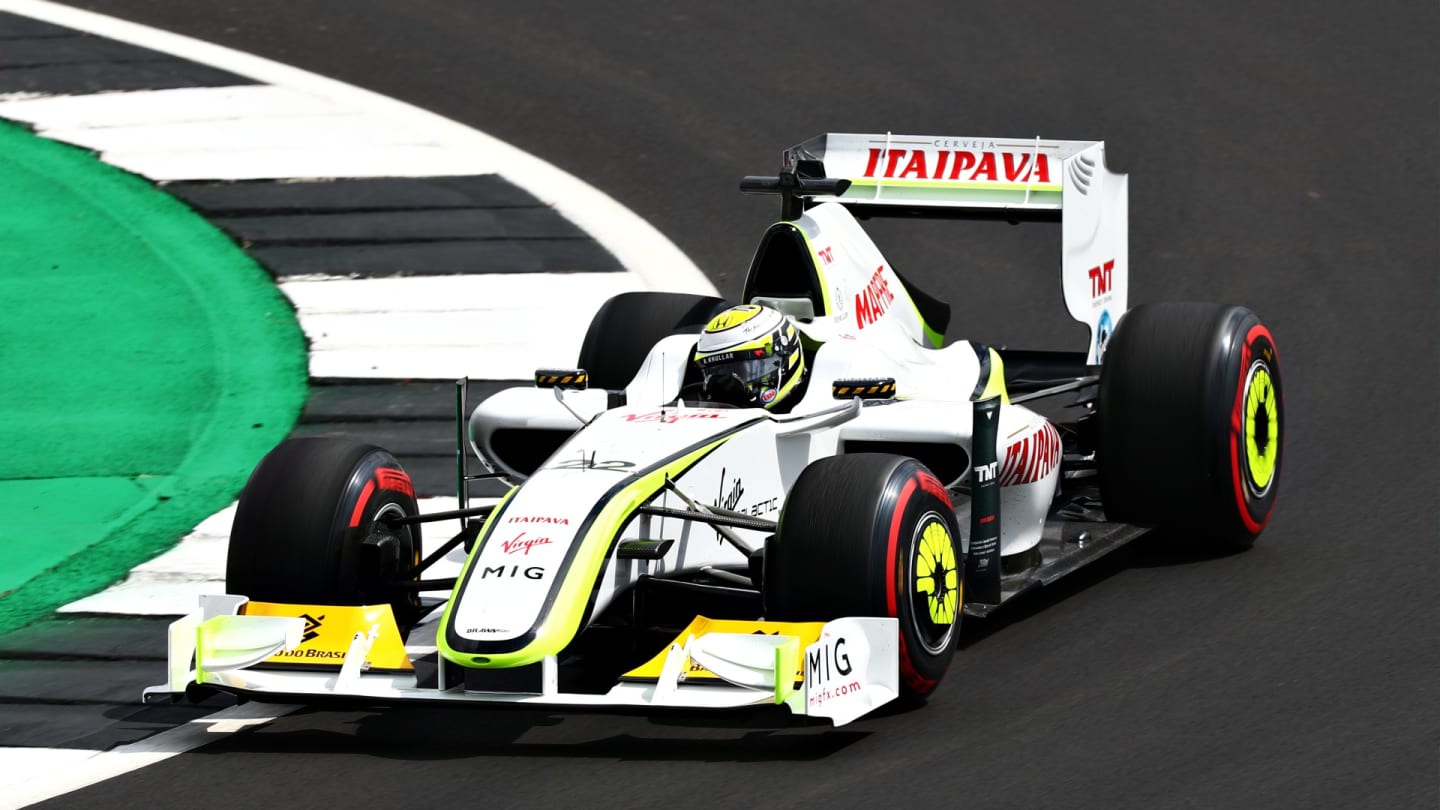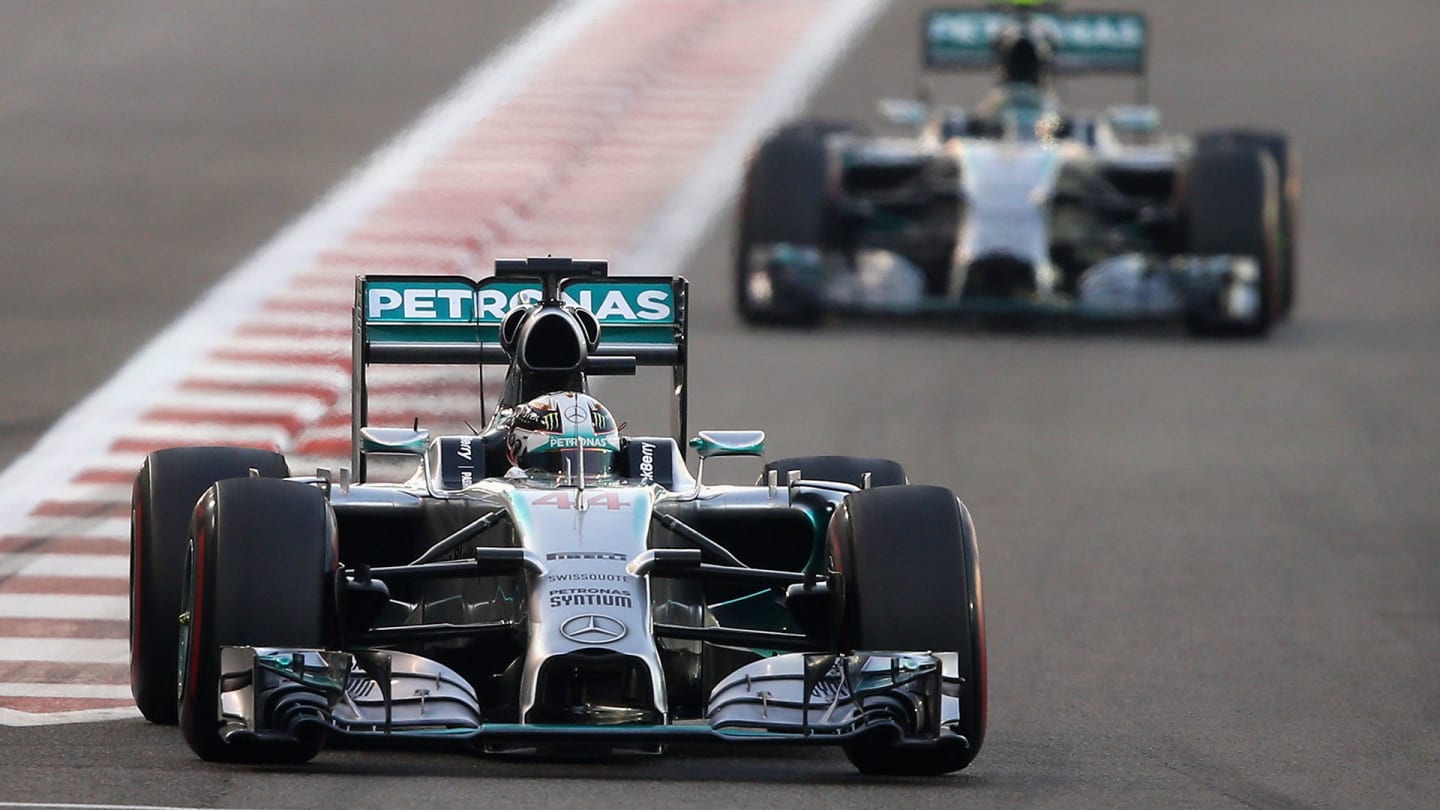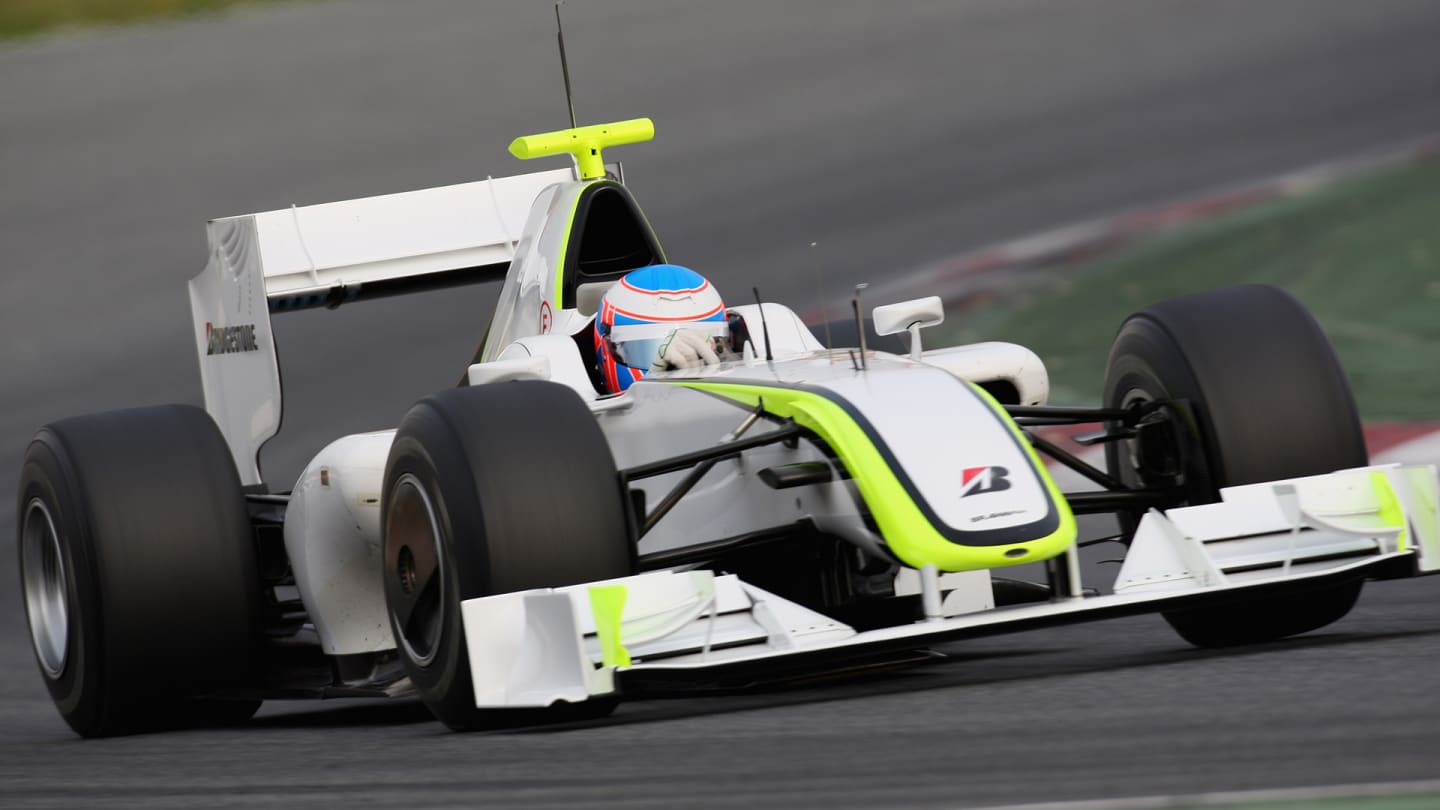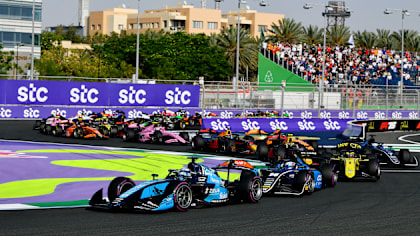
Feature
5 times F1 teams got the new regulations right
Share

Regulation changes in Formula 1 have always presented an opportunity for teams to leap up the grid. Get the new rules right, hit on the correct concept and innovations others have missed and it is possible to steal a march on the rest.
F1 history is full of examples of times when a team was transformed into a title-winner through understanding the regulations well and producing a strong car from the very start.
READ MORE: 5 times F1 teams got the new regulations right
Here are five of the most famous cases when a team jumped to the front thanks to mastering rule changes.
Mercedes W05 (2014)
In 2014, Formula 1 went through the biggest change of engines in its history with the switch to the current 1.6-litre V6 turbo hybrid power units. This transformed the nature of F1, setting it on a path to the current engines that can exceed 50% thermal efficiency and kick out 1,000bhp. It also allowed Mercedes to transform itself from race winner into F1’s dominant force, winning 16 out of 19 races and taking Lewis Hamilton to the World Championship.
The Mercedes success was down to a number of factors. Firstly, they the first to commit to early work on the new engine formula with single-cylinder test engines and also had vast knowledge of KERS to feed into their energy recovery systems work.
Secondly, they were a team that had rapidly expanded since Mercedes took over what was previously called Brawn and had evolved to the point where they were ready to fight at the front – as reflected in the good job they did with the various chassis changes. While the engine was key to their success, the W05 was also a very effective car.
This doesn’t mean it was easy. Mercedes may have spent more time on the power unit project than others but they hit plenty of problems along the way, and even in the middle of 2013 there were concerns it wouldn’t be ready. But Mercedes AMG High Performance Powertrains did a superb job to troubleshoot and produced a power unit that set the standard for F1 in 2014, and for years to come.

The Mercedes W05 won 16 out of 19 races in the 2014 season
Brawn-Mercedes BGP001 (2009)
The story of Jenson Button and Brawn winning the 2009 drivers’ and constructors’ championships started in late November 2007. This was the day when new Team Principal Ross Brawn walked through the door at Honda after two years spent on sabbatical and decided the team must focus on the major aerodynamic rule changes for 2009 that introduced wider front wings, narrower and higher rear wings and attempted – with only partial success – to simplify the various flicks and vanes that littered the cars. The result was the legendary Brawn BGP001.
The car is famous for the controversial double diffuser, which was ruled legal by stewards at the season-opening Australian Grand Prix. While Toyota and Williams also hit on the design, Brawn did it best and Button reeled off six wins in the first seven races of 2009.
But it wasn’t just about the double diffuser. The car also hit on the outwash front wing endplate concept that soon became ubiquitous and built on the improvements made by Honda during 2008, particularly in terms of suspension.
Despite the newly independent team struggling for budget as the season progressed, and therefore development, the car remained competitive enough for Rubens Barrichello to win at Valencia and Monza, and for Button to close out the World Championship.

Careful planning created the conditions for Brawn's success
McLaren-Mercedes MP4/13 (1998)
The look of Formula 1 cars changed dramatically in 1998. The introduction of narrow-track cars meant a width reduction from 2000mm to 1800mm, with grooved tyres introduced.
These changes were conceived to reduce the available grip by reducing the potential for downforce-generating devices and cutting the tyre contact patch by around 12% without requiring disproportionately narrow tyres. There were also other changes, including to the shape of the chassis for safety reasons.
McLaren had recruited design genius Adrian Newey from Williams. Although he didn’t start work until the beginning of August 1997, he’d already been working on ideas for the 1998 rules, including the need to lengthen the wheelbase, contrary to conventional thinking, for aerodynamic and diagonal stability. He also worked to lower the centre of gravity for gentler weight transfer and found a way to retain something approximating a v-shaped chassis, despite the rule tweaks to make it squarer.
All of this, on top of the brake steer system used the season before and the brilliance of Mika Hakkinen, resulted in a World Championship double in 1998.
)
Mika Hakkinen driving the McLaren MP4/13 at the Italian Grand Prix
Brabham-BMW BT52 (1983)
The flat-bottom regulations of 1983 that outlawed the ground-effect cars with low-hanging side skirts that sealed the underfloor are regarded by many – including Adrian Newey – as the biggest F1 rule changes prior to those coming in for 2022. They transformed the look of the cars.
The relatively late rule change led to design genius Gordon Murray having to scrap the intended 1983 ground-effect car and come up with an all-new one. He hit on the concept of an arrow-shaped car, featuring a longer wheelbase and with the weight distribution shifted rearward. It was a relatively compact car, featuring a fuel tank that couldn’t complete a full race distance, necessitating refuelling pit stops.
TECH TUESDAY: The ground-breaking Brabham BT52
This was partly because of the team’s real trump card – the four-cylinder BMW turbo engine. Designed by the legendary Paul Rosche, this was enormously powerful but didn’t show its full potential until the second half of the season, when its specially formulated fuel was used for the first time. This gave it a huge kick in power and made the BT52B, as it was called after a mid-season upgrade at the British Grand Prix, the car to beat.
The car had won on its debut in Brazil in the hands of Nelson Piquet, but with the big step forward later in the season it was unbeatable in the closing stages of the year, dominating the last three races to give the Brazilian the first World Championship victory for a turbocharged car – although Ferrari pipped Brabham to the constructors’ championship.

Nelson Piquet at the Monaco Grand Prix
Ferrari 'Sharknose' (1961)
Ferrari lagged behind when the rear-engine revolution spearheaded by Cooper in 1959-1960 changed F1. But in 1961, everything changed with the new formula, cutting normally aspirated engine capacity from a maximum of 2.5 litres to 1.5l. A minimum weight was also introduced and set at 450kg, although it was originally 50kg higher.
Ferrari were the best-prepared for the new regulations, given the British teams that had dominated previously felt, wrongly, that their influence would lead to the rule changes being dropped.
READ MORE: Ferrari to call 2022 car the F1-75 in honour of first production car
Using an engine derived from the 1.5-litre V6 Formula 2 engine used the previous year, but with major changes overseen by Carlo Chiti including the flattening of the v-angle from 65 to 120 degrees, Ferrari had a strong powerplant ready to go.
Ferrari also had an improved chassis, which was an evolution of the previous year’s Ferrari 256 but a littler narrower and with the centre of gravity lowered. At the front, it featured two distinctive nostril-shaped intakes, earning it the nickname ‘Sharknose’.
The car won five out of the seven World Championship races it contested in 1961, with Phil Hill crowned champion after the death of team mate Wolfgang von Trips at Monza.
868504402)
Th Ferrari 'Snarknose' 1961 being driven at the German Grand Prix
Everything you need for the 2022 Formula 1 season
- DIARY DATES: The 2022 F1 calendar and F1 car launch schedule
- WATCH: Everything you need to know about the new 2022 F1 car
- 2022 F1 GRID – All the drivers and teams racing this season
- 10 things every Formula 1 fan should be excited for in 2022
- 5 bold predictions for the 2022 season – but how many will come true?
YOU MIGHT ALSO LIKE
Podcast F1 EXPLAINS: Ask an F1 Team Principal with Alpine boss Oliver Oakes
Podcast F1 NATION: Piastri makes a statement to finish F1’s triple header on top – it’s our Saudi Arabian GP review
Feature The ‘important’ lessons F1 is learning from the development of sustainable fuels in F2 and F3 ahead of 2026
News ‘Our worst performance so far’ – Wolff left searching for answers after Mercedes’ low-key display in Saudi Arabian GP




